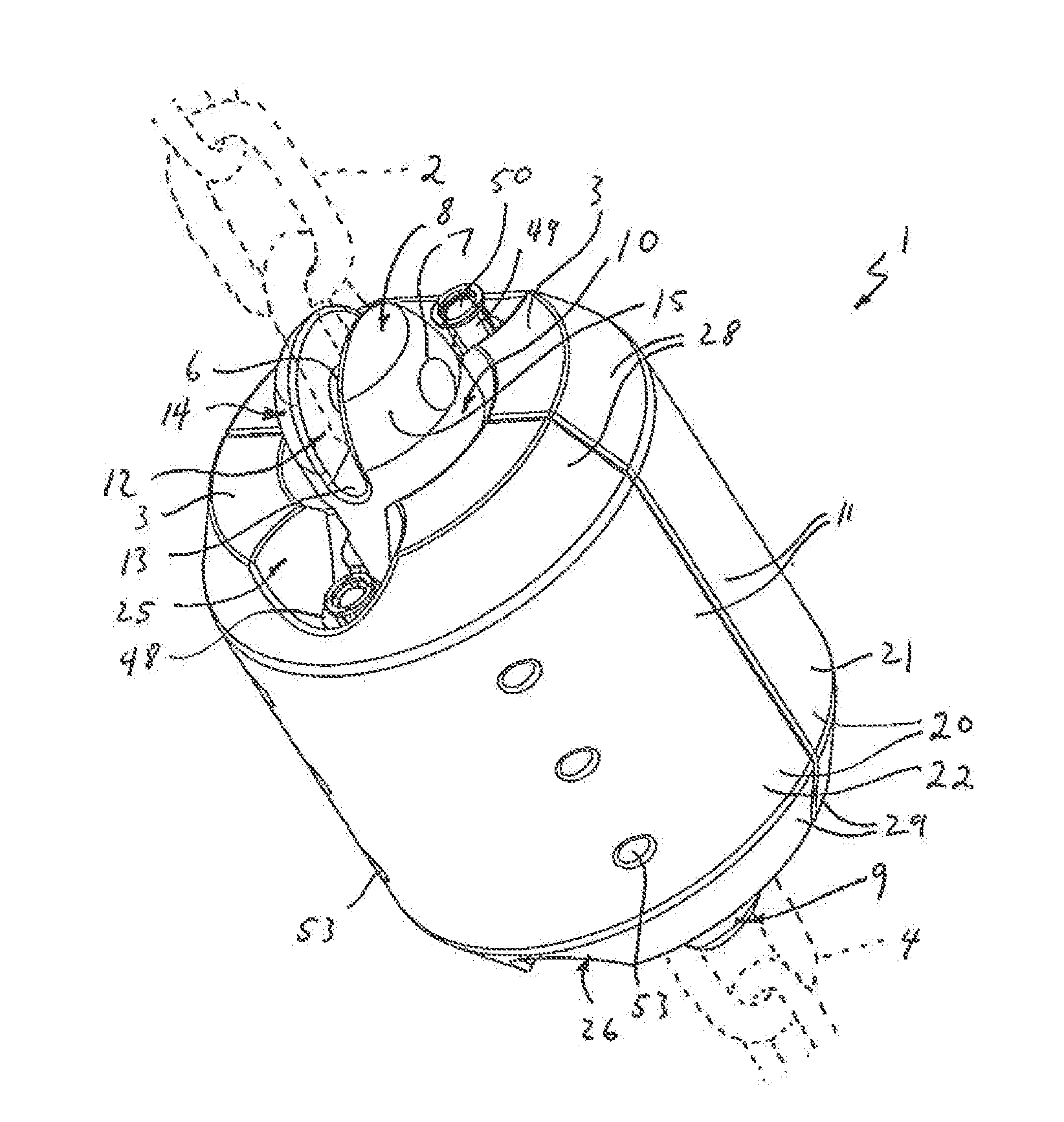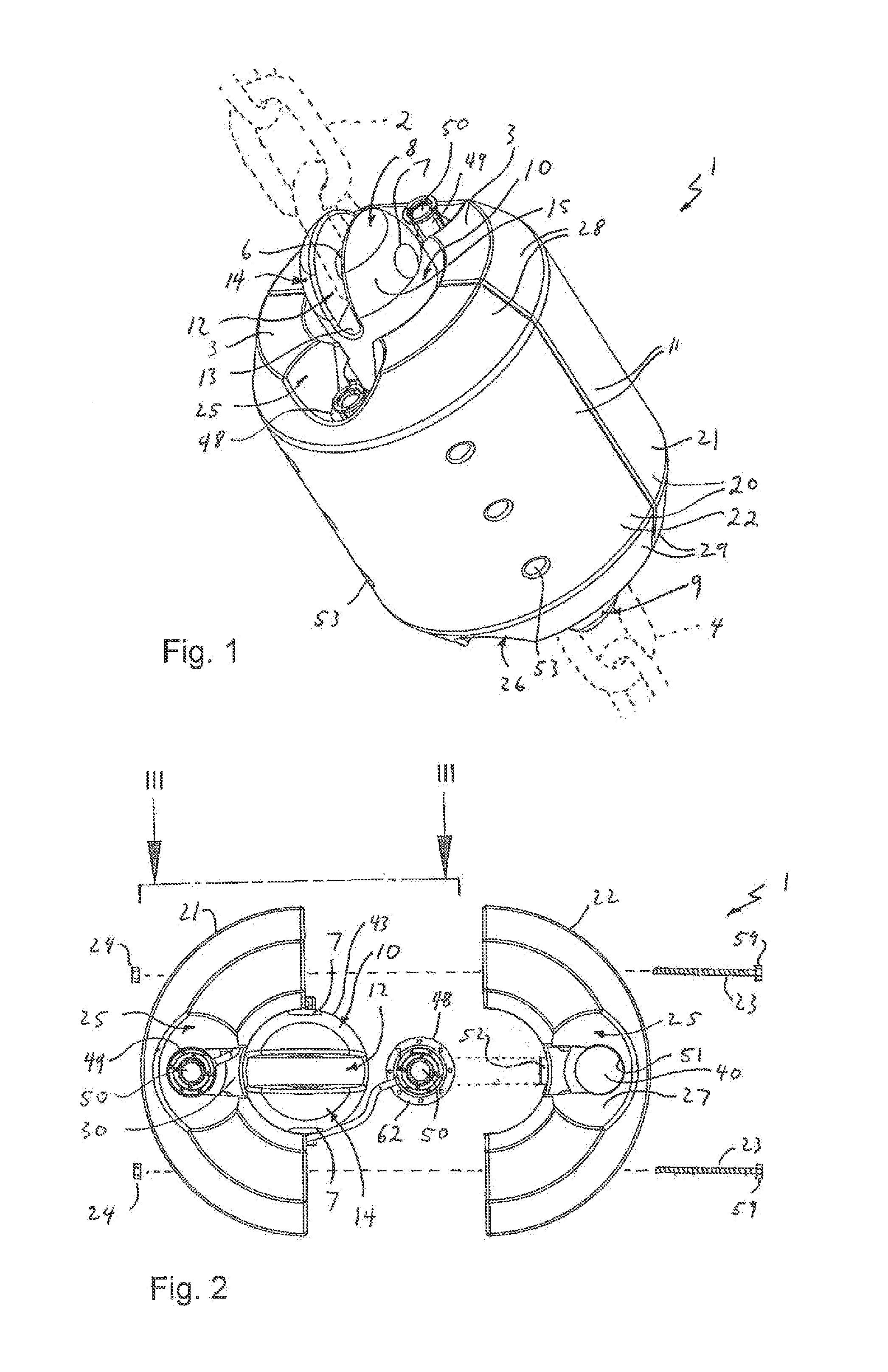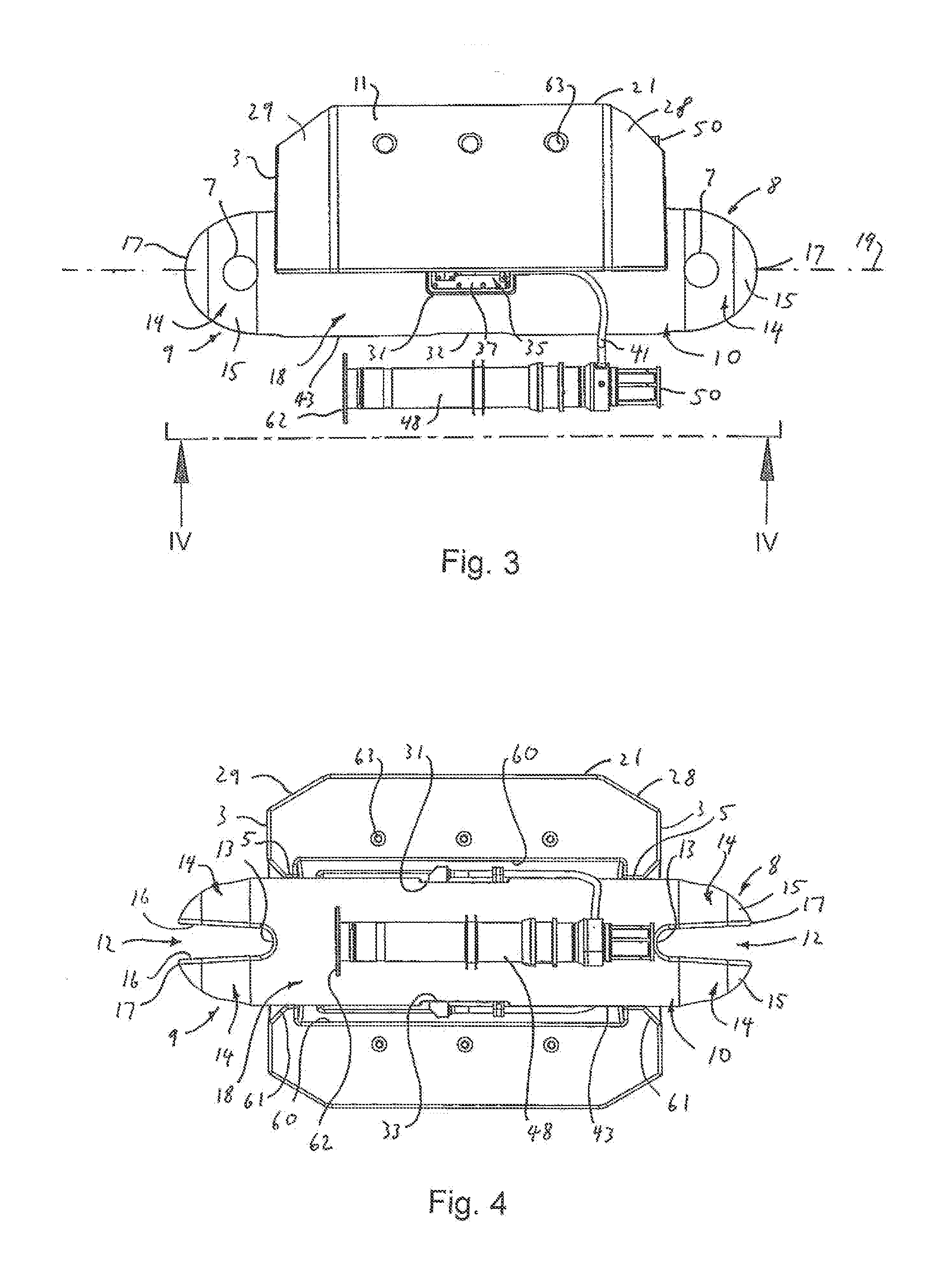Monitoring of underwater mooring lines
a technology for underwater mooring and monitoring, which is applied in the direction of mooring equipment, vessel construction, transmission, etc., can solve the problems of instrumented load shackles, connectors and cables exposed, and mooring lines used in these situations are generally of a significant length,
- Summary
- Abstract
- Description
- Claims
- Application Information
AI Technical Summary
Benefits of technology
Problems solved by technology
Method used
Image
Examples
Embodiment Construction
[0037]FIG. 1 shows a mooring line monitor 1 of a preferred embodiment of the invention for use in long term mooring applications. In use, the mooring line monitor 1 will form a joining link within a mooring line below the water line, for example when mooring floating production systems or mooring of mobile offshore units. The monitor will typically be installed at a natural join within a mooring line. Although FIG. 1 shows in dashed outline the ends of two lengths of steel chain links, 2, 4, either or both ends of the mooring line monitor 1 may equally well be connected to other types of mooring line, for example fiber tether. The mooring line monitor may therefore be used either to link two lengths of similar lines, or be used to connect two dissimilar mooring lines, for example chain link and steel rope.
[0038]The mooring line monitor 1 comprises an elongate main body 10 and two pin assemblies one of which 6 is visible in the drawings. Each pin assembly is removable from the main b...
PUM
| Property | Measurement | Unit |
|---|---|---|
| diameter | aaaaa | aaaaa |
| diameter | aaaaa | aaaaa |
| width | aaaaa | aaaaa |
Abstract
Description
Claims
Application Information
 Login to View More
Login to View More - R&D
- Intellectual Property
- Life Sciences
- Materials
- Tech Scout
- Unparalleled Data Quality
- Higher Quality Content
- 60% Fewer Hallucinations
Browse by: Latest US Patents, China's latest patents, Technical Efficacy Thesaurus, Application Domain, Technology Topic, Popular Technical Reports.
© 2025 PatSnap. All rights reserved.Legal|Privacy policy|Modern Slavery Act Transparency Statement|Sitemap|About US| Contact US: help@patsnap.com



